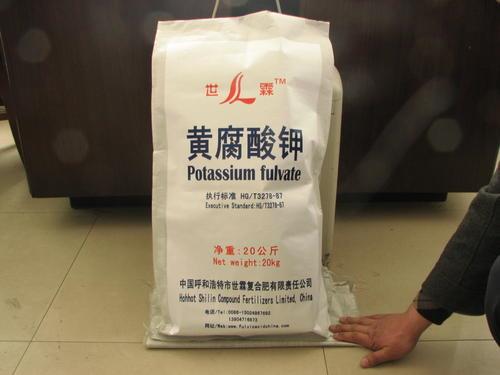
2020-06-30
1. Promote the development of crop roots and stems and increase the germination rate.
Potassium humate contains a variety of nutrient elements. After 3-7 days of application, new roots can be seen. In addition, many increase secondary roots, quickly improve the ability of green plants to digest and absorb nutrients and water, promote cell division, and speed up crops. growth and development.
2. Improve the utilization rate of chemical fertilizers.
Potassium humate provides the necessary nitrogen source and nitrogen source for the theme activities of favorable microbial strains in the soil layer, which in turn promotes the breeding of many microbial strains, dissolves phosphorus, dissolves potassium, and fixes nitrogen, thereby further improving the utilization rate of light fertilizers. Increase usage.

3. Improve the ability of green plants to withstand drought, cold and disease.
Potassium fulvate can promote the production of soil colloids in the soil layer, improve the ability of the soil layer to consolidate soil and lock water, and improve the drought tolerance of green plants. The improvement of organic compounds, thereby improving the cold-resistant working ability of crops. Green plants have more developed rhizomes, the ability to digest and absorb nutrients and water is greatly improved, the main stem is strong, and the working ability of disease resistance is strong.
4. Improve efficiency and improve quality.
Potassium fulvic acid is fully water-soluble, easy to digest and absorb, and has strong water permeability. The actual effect is more than 10 times that of general humic acid. The active substance of fulvic acid can improve the digestion and absorption utilization rate of nitrogen, phosphorus and potassium, and greatly improve green plants. Its own nutrients, improve efficiency and improve crop quality.
5. Improve the soil layer and resist stubble.
Fulvic acid fuses with sodium ions in the soil layer to produce a stable soil colloid. The water, fertilizer, gas, and heat conditions in the soil layer are sufficient to adjust, and many intestinal probiotics thrive in the soil layer, so that harmful bacteria in the soil layer can be manipulated. Therefore, improving the resistance of crops has a significant repairing effect on the agglomeration and soil salinity caused by long-term excessive fertilization.